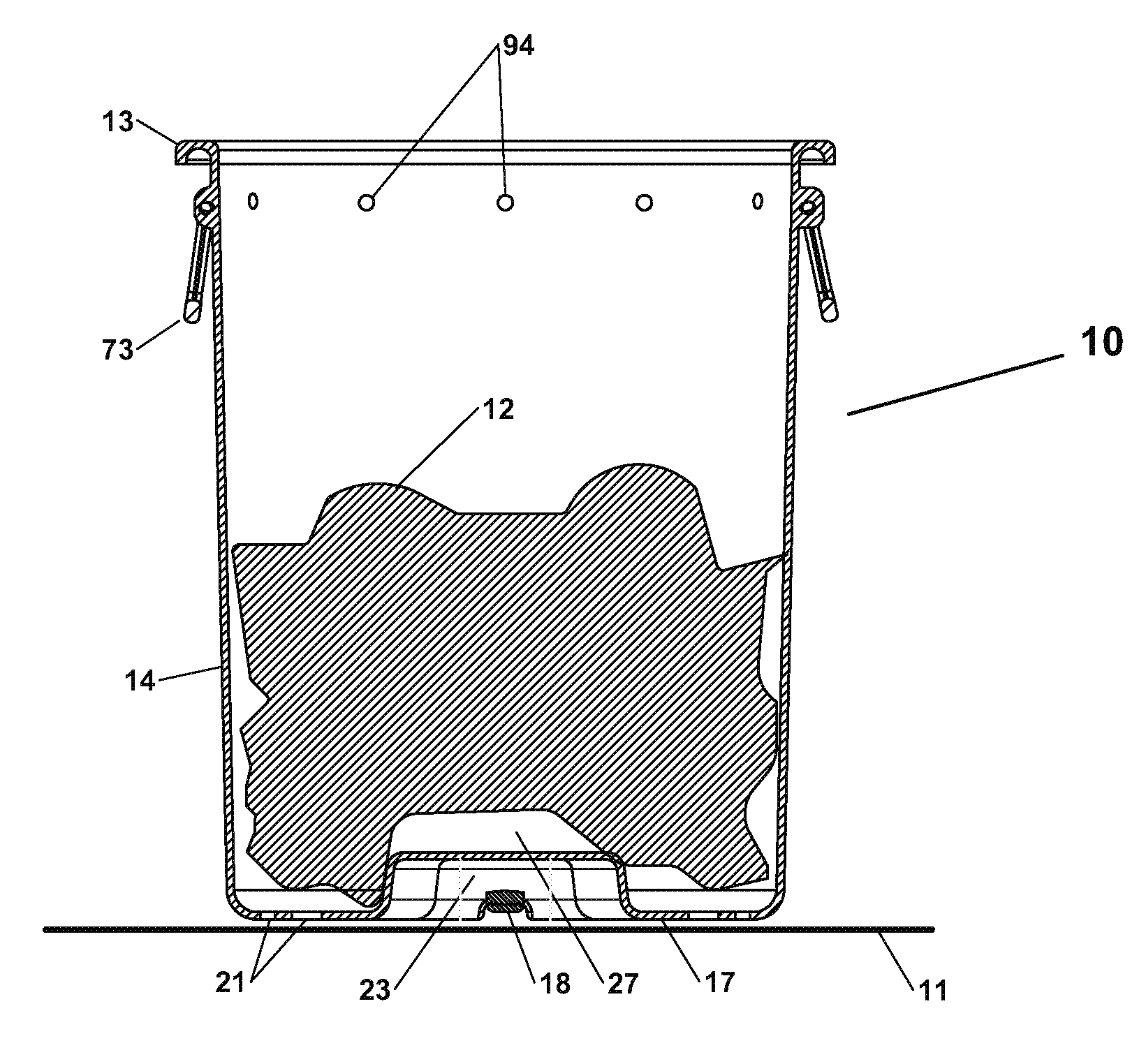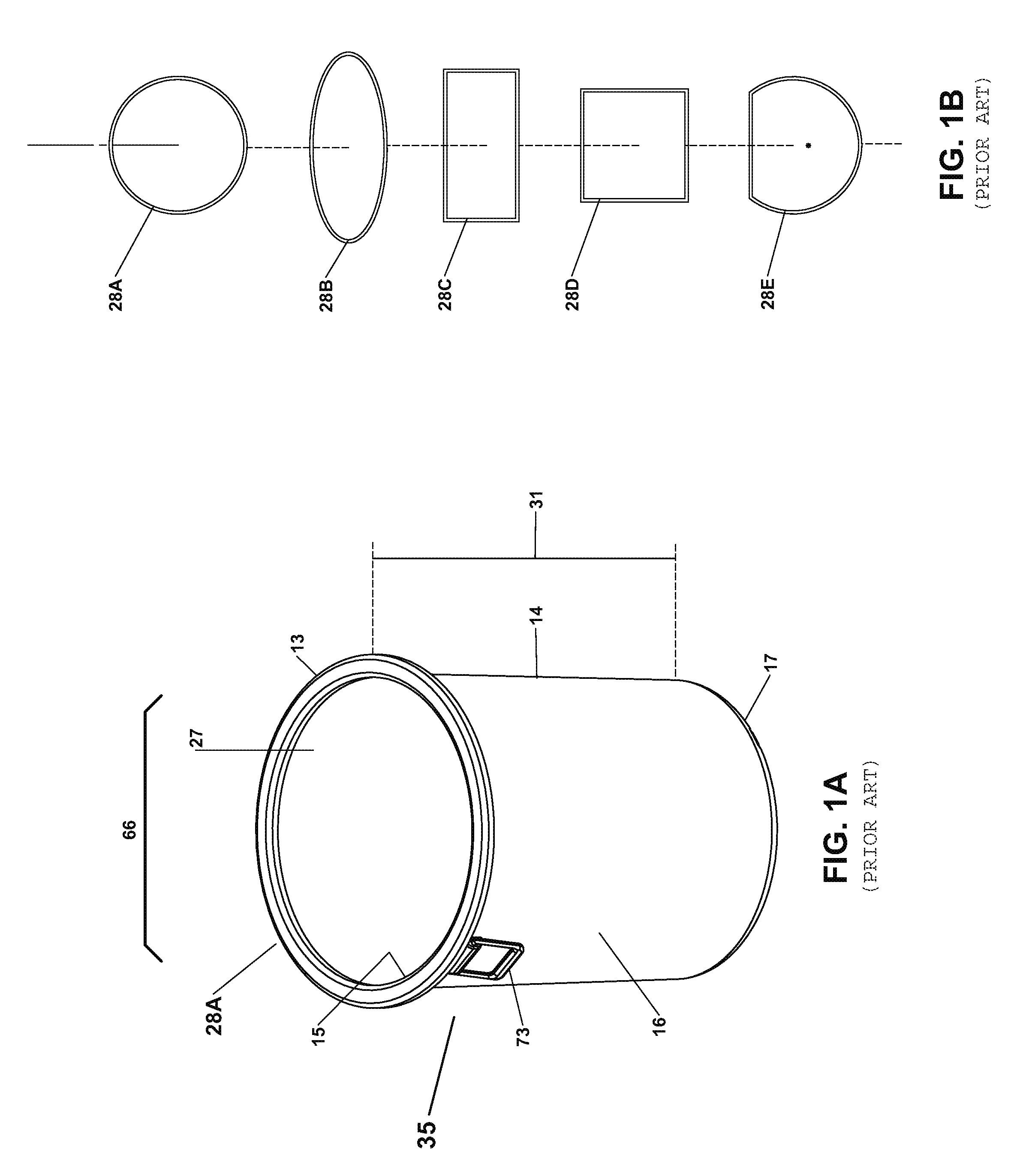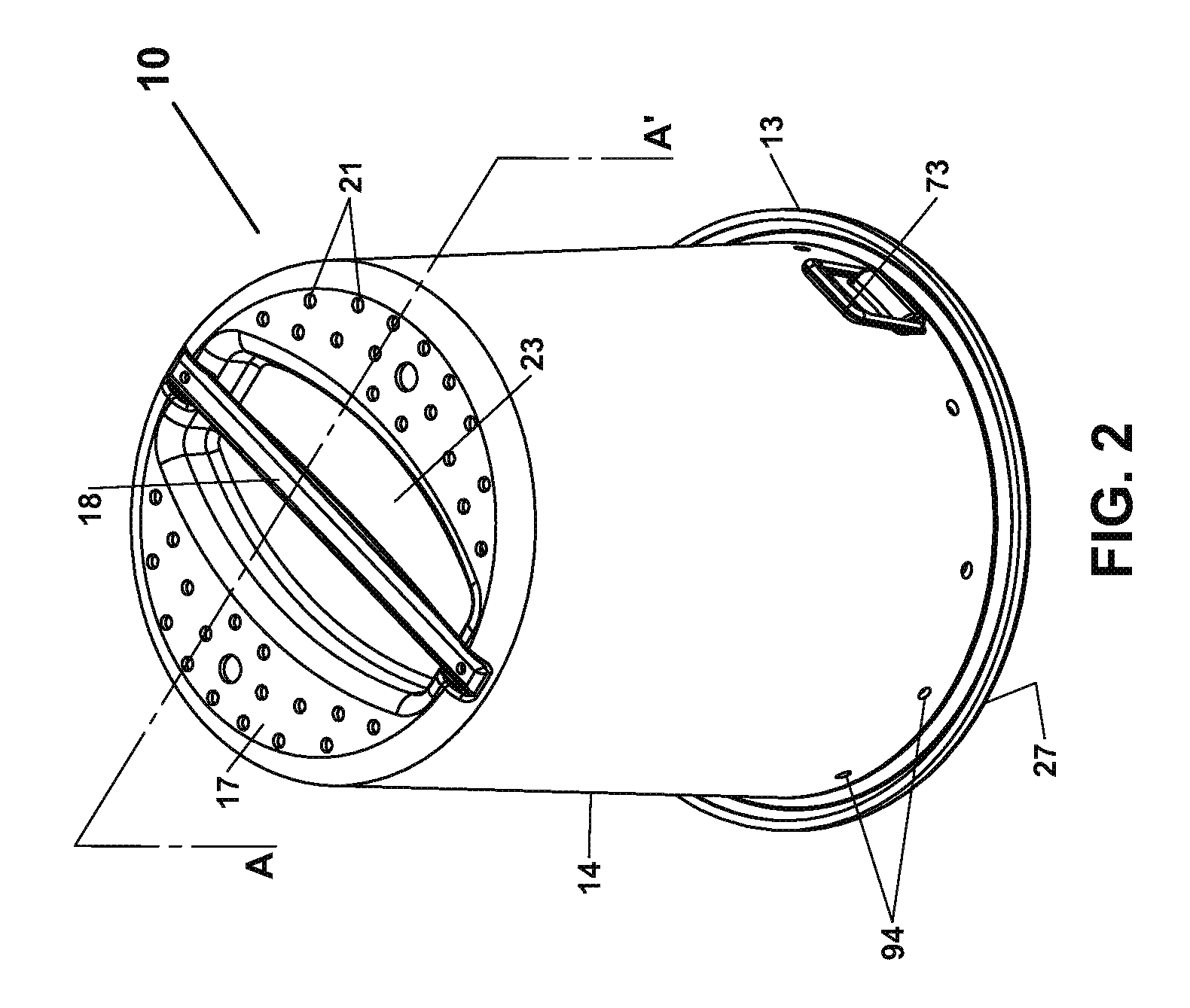Apparatus and method for collecting and transferring yard waste
a technology for transferring containers and yard waste, which is applied in the direction of preventing decay, sealing, and collecting refuse, can solve the problems of affecting the collection and removal of yard waste, so as to facilitate the collection method and facilitate the containment and transfer of wet materials, the effect of facilitating the extraction of the vented transfer container
- Summary
- Abstract
- Description
- Claims
- Application Information
AI Technical Summary
Benefits of technology
Problems solved by technology
Method used
Image
Examples
Embodiment Construction
[0025]Now referring to the drawings, the method and apparatus for collecting debris in a transfer container and transferring it to a collection bag is shown and generally illustrated in the figures. As can be seen, the method generally involves filling an upright, vented transfer container with debris, optionally compacting the contents inside the container, draping a collection bag over the filled transfer container, inverting the bag-covered transfer container, extracting the inverted transfer container from the collection bag so that the contents may be deposited in the collection bag and closing the collection bag for pickup or disposal. The apparatus provides a vented transfer container that facilitates the method of collecting debris and transferring it to a collection bag by employing vents that break the vacuum that typically is created when a collection bag is extracted from known debris collection containers.
[0026]As shown in FIG. 1A, a known, prior art trash can 35 has a ...
PUM
 Login to View More
Login to View More Abstract
Description
Claims
Application Information
 Login to View More
Login to View More - R&D
- Intellectual Property
- Life Sciences
- Materials
- Tech Scout
- Unparalleled Data Quality
- Higher Quality Content
- 60% Fewer Hallucinations
Browse by: Latest US Patents, China's latest patents, Technical Efficacy Thesaurus, Application Domain, Technology Topic, Popular Technical Reports.
© 2025 PatSnap. All rights reserved.Legal|Privacy policy|Modern Slavery Act Transparency Statement|Sitemap|About US| Contact US: help@patsnap.com



